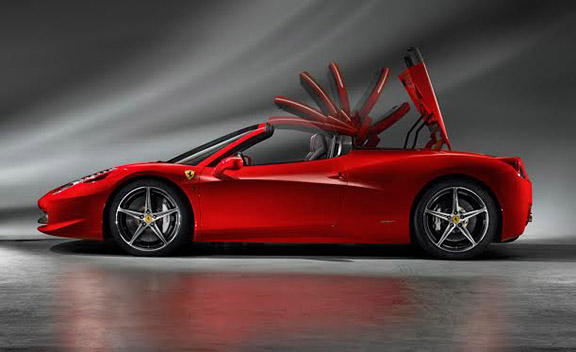The secret to Ferrari’s success is not just the visual and aural drama of its cars but also its value of exclusivity.
The World of Ferrari
Locanda delle Tamerici lies on the edge of the Italian Riviera, not too far from the town of Ameglia. The Michelin-starred restaurant is an unpretentious, warm place that serves fresh pasta and seafood. Its patio faces the sun-bleached Ligurian Sea, which mirrors the colour of the sky above it. I was lunching here after driving some 180-odd kilometres in the Ferrari 458 Italia Spider. It was a viscerally impactful drive from Maranello, across Regio Emilia and around the hills near Carrara where the veins of marble glistened like snow. I always thought Ferraris were overrated, but that was before this drive, which happened about two years ago. But, now I had a fair idea as to why Chinese millionaires, Arab Sheikhs and Balkan crime bosses pay top dollar (the price in India is Rs three-something crore, ex-Delhi) to own one, why automotive journalists are elated each time they are invited to drive a new model, and why every other supercar out there makes its name by baiting Ferrari’s models. Never before had I come across an automobile that so swiftly and precisely converted a driver’s many simultaneous physical inputs and transmitted them onto the road ahead. All it took were quick flicks of the sharp steering and I was alternating between sunlight and shade around the hills. To both the layman and automobile enthusiast, a Ferrari is about visual appeal, but the noise that each of its cars make is no less important. When you think of a Ferrari, you also hear its exhaust note. The Spider sounded glorious on the autostrada, like a chamber orchestra made up only of trombone players gliding from one pitch and texture to another. The gentleman from Ferrari’s R & D department, who was seated next to me at the table, was open to questions. I wanted to know how they got the car to sound so right. Did they have people who sat and listened to pre-production models idling, cruising and going flat out on the company’s three-km Fiorano Circuit, in Maranello? Men with a magnificent ear for tone, timbre and pitch? Well, there was indeed something like that. Every couple of years, as yet another swoopy Ferrari model gets ready for production, a bunch of men, from grizzled old racers and historians to aficionados and loyal patrons, are invited to Fiorano where they close their eyes and listen and help tune the car’s exhaust note.
Last year Ferrari, which was adjudged the most powerful brand in the world by British research firm Brand Finance, registered its best financial result in its 66-year-old history. The Maranello-based company sold 7,318 cars and recorded revenues of $3.2 billion, up 8 percent from 2011. Ferrari’s biggest market is the United States. It sold around 2,000 cars in America last year. What about India? Ferrari has a presence in India through the Delhi-based Shreyans Automobiles, which started selling its cars in 2011, and, while the dealership does not give out any numbers, the buzz is that they are not too far from recording a three-digit sales figure.
What is the secret to Ferrari’s success? There is, of course, the visual and aural drama of its cars and its success in Formula One, but, as importantly, like storied luxury watchmakers, Ferrari knows the value of exclusivity. It could manufacture more cars than the around 7,000 it produced last year, but that would, perhaps, destroy its exclusivity. It might make hatchbacks such as the Ferrari FF and even acknowledge the threat of global warming by producing a mild hybrid such as the LaFerrari, but, as Luca Cordero di Montezemolo told the Wall Street Journal, “I will always produce less than demand.” And, therein lies a lesson for many a luxury brand. Ferraris are only for the truly rich. The rest of us have to be content with a variety of things emblazoned with the Prancing Horse logo.
The writer is the managing editor of Man’s World magazine.



